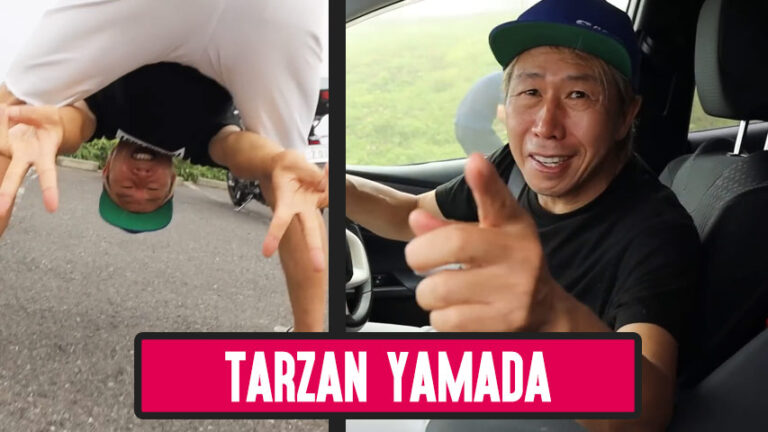
In recent years, the car has become much more important than in the past. Tyre stretch is also a popular way to change the appearance of cars. This process involves installing tires that are narrower than the ring, thus giving the car a unique, elongated appearance.
In the use of the Tyre stretch method, the focus is on the dimensions of the tire, the height of the side wall and the width of the ring to allow the acquisition of different stretch surfaces. There are 4 types of stretch surfaces. For example, while Level 0 means dimensional matching between the tire and the ring, levels 1 to 4 indicate different stretches and their effects on driving behavior.
On the other hand, there is also a lot of discussion about the negative traction of the tire. These types of tires are wider than the ring, which usually improves driving dynamics.
Of course, they are less attractive in appearance and may affect driving behavior at negative levels. So before choosing any of these styles, you should make sure that it meets valid principles and standards.
In general, the tyre stretch surface can be useful in carefully examining the composition of the rubber and ring and their correct dimensions. However, in this article, we’re going to look at the topic of Tyre stretch, its steps and benefits. So stay tuned.
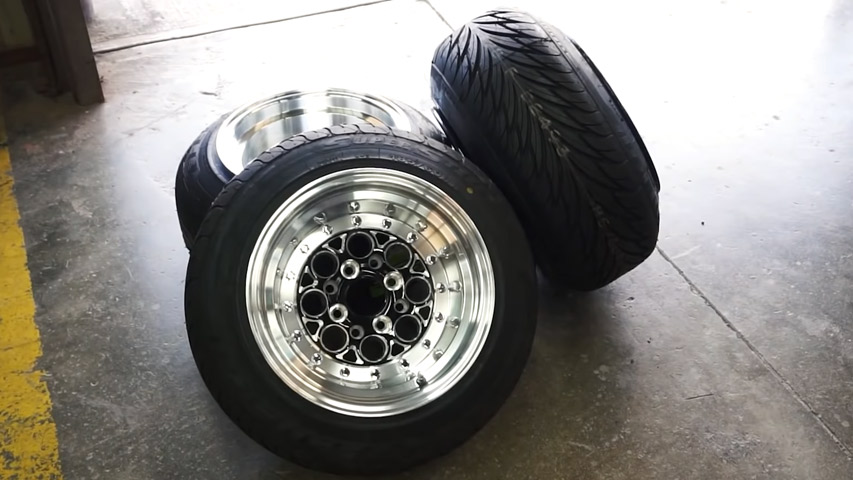
Tire stretch Stages
As we mentioned at the beginning, tire stretch stages are basically divided into four categories, each of which gives the tire a different amount of traction and appearance. Now, in this section, we’ve looked at one step without stretching and the base and these four Stages in five categories, which are::
Stage zero or the base state of the tire
Step 0 in Tyre stretch is known as the base position or no stretch. At this point, the tire is completely on the ring without any stretch or pressure.
The edges of the tire are in direct contact with the edges of the ring, and there is no empty space between them. Also, the side walls of the tire are flat and without any curvature or angle. This condition indicates the standard and safe installation of the tire on the ring.
The tire in the base position has the highest level of road contact, which helps to increase the stability and handling of the car. The uniform distribution of wind pressure at all points of the tire also helps to increase the life of the tire. The use of the tire in the base position is quite convenient and safe for everyday and ordinary driving.
But to maintain safety it is important to check and repair any wear or damage on tires or rings before driving. This stage is known as the base state or zero stage in tire stretch stages.
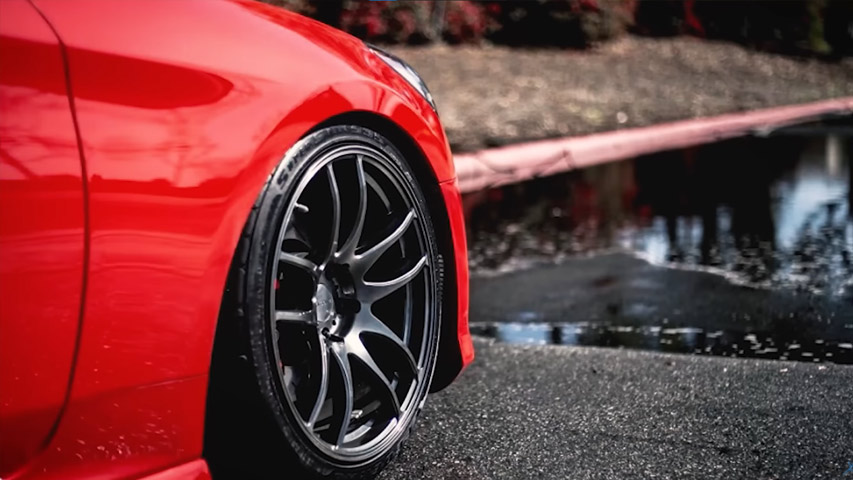
Step 1 or gentle tire tension
Step 1, or gentle tire tension, is the first tension step in tire stretch stages. The process in which the tire is gently and partially stretched, so that the side walls of the tire appear angled.
This type of traction, known as gentle traction, is allowed to receive technical approvals such as the German TUV. At this point, contact between the edges of the tire and the ring is maintained, but a slight gap may arise between them, which is caused by the curvature of the side walls of the tire.
Gentle traction is suitable for drivers who are looking for a more sporty look for their car and at the same time want the tire to fit easily under the fender. This may improve the reaction and feedback of tires to the steering wheel and Road.
This level of traction at this stage of the tyre stretch may cause a slight decrease in driving comfort and increase the likelihood of air leaking from the tyre. So before doing it, it is better to consult a specialist. Also, compared to the base position, gentle stretching produces slight changes in appearance, performance and driving comfort.
Also, in terms of Appearance, this type of traction can make the car look more sporty and attractive. In terms of performance, as we said, it may improve the reaction and feedback of the tires to the steering wheel and the road. Ultimately, this choice depends on the driver’s taste, type of car and driving conditions.
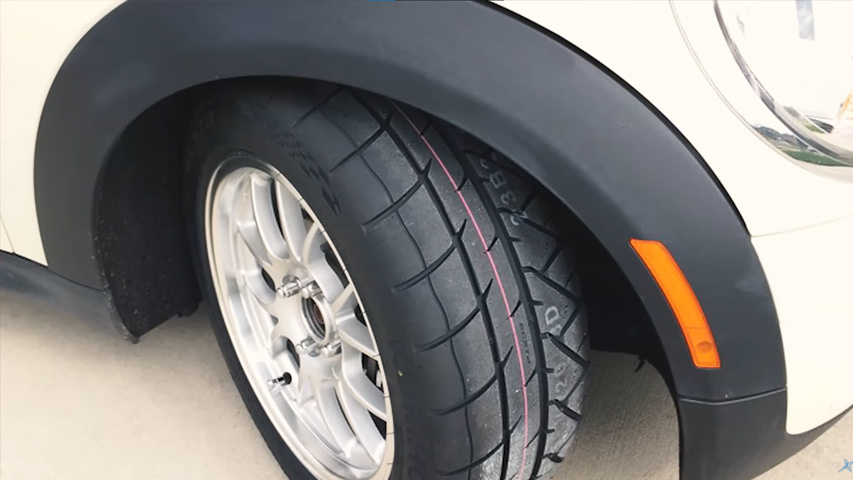
Step 2 or standard tire tension
At this stage of the tire stretch stages, the tire reaches its maximum stretch angle and the rim edge may appear slightly. This type of traction can be considered as standard traction, as it gives the car a more sporty appearance and at the same time has fewer risks than full traction.
At this point, the edges of the tire are almost in contact with the edges of the ring, but there may be a slight gap between them.
This space is caused by the tyre stretch and the curvature of its side walls.
In principle, standard traction is suitable for drivers who are looking for a more sporty look for their car and at the same time want to avoid the dangers of full traction.
This type of traction can make the car look more muscular and attractive, and also does not significantly affect the stability and handling of the car.
In fact, the choice between tire stretch stages depends on the driver’s taste, type of car and driving conditions. Standard traction can be a good option for drivers looking for a balance between sporty appearance and performance and safety.

Step 3 or full tire tension
In Step 3, known as full stretch, the tyre stretch is done perfectly and covers almost the entire edge of the rim. This stage of tire stretch stages is the most recommended, as more stretching can pose significant risks.
In fact, at this point, the edges of the tire are completely on the edges of the ring, and there is no empty space between them. The side walls of the tire are also strongly bent, creating a sharp angle with the surface of the ring.
In principle, full tire traction gives the car a very sporty and spectacular appearance and is often used in motor show and racing. However, this type of tyre stretch is not suitable for everyday driving and carries many risks.
The risks include increased risk of sudden tire detachment from the ring, reduced stability and handling of the car, increased risk of air leakage, and reduced tire life. For this reason, it is recommended to avoid full tire stretching for everyday driving, and this type of stretching is done by specialists and in certain situations.
Also, compared to the previous stages of the Tyre stretch, full traction makes significant changes in the appearance, performance and safety of the car.
The choice between the different stages of the tyre stretch depends on the driver’s taste, type of car and driving conditions.
But it is better to remember that full tire stretching can only be done under certain conditions and with complete caution.
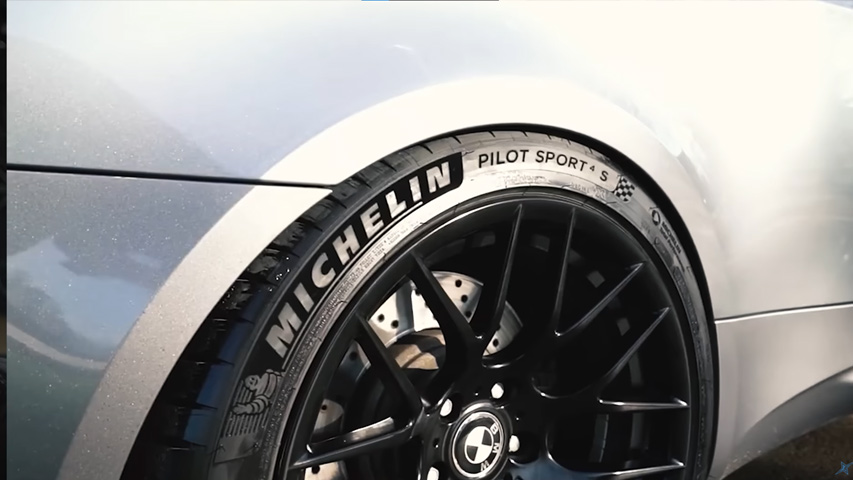
Step 4 or excessive tire stretching
At this stage of the tire stretch stages, the tire stretch increases to the point that the edges of the tire are no longer in contact with the edge of the ring. Of course, this is dangerous, as it can lead to sudden disassembly of the tire from the ring, a sharp decrease in stability and handling of the Car, an increase in the likelihood of air leakage and a decrease in the life of the tire.
This Method is recommended only for displaying cars at exhibitions and with complete caution by specialists. In everyday driving it is illegal and dangerous to perform this stage of tyre stretch. Comparing it to previous stages also shows that tire traction at this stage is associated with serious risks.
So it’s recommended that you avoid doing it. For example, it affects the appearance and performance or comfort and safety of the car.
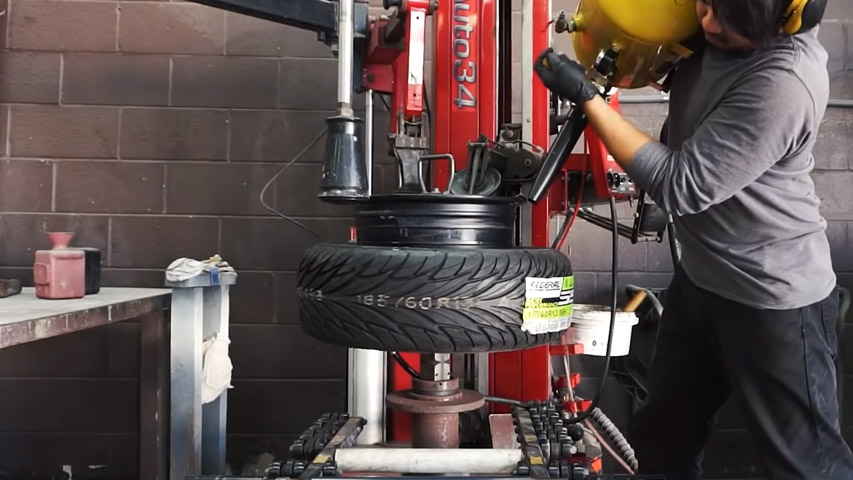
Stretched tires vs Regular
Basically, stretched tires and conventional tires can be considered two different types of tires, each with its own advantages and disadvantages. Now choosing the right type of tire depends on your needs and type of car.
In fact, the Tyre stretch is a tire that stretches significantly more than usual on the ring, creating a more sporty and attractive look. On the other hand, conventional tires are installed on the ring according to the manufacturer’s specifications and have more safety than elongated tires.
Elongated tires may give the car a more attractive appearance, and some drivers also believe that they improve the handling and responsiveness of the car. But these types of tires also face disadvantages such as increased likelihood of tire separation from the ring, a sharp decrease in stability and handling, an increased likelihood of air leakage, and a decrease in tire life.Plus Tyre Stretch may bring you an inappropriate riding experience. On the other hand, conventional tires are safer and cheaper than elongated tires. These tires often offer smoother and more comfortable rides.
However, some believe that conventional tires do not provide as good handling and responsiveness as tires.
So you should note that the choice between tires and conventional tires depends on your needs, use and type of car. If you’re looking for a more sporty look and buying safety risks, stretched tires are the perfect option for you.
But if your priority is convenience, regular tires are a better choice. For this reason, before choosing any type of tire, it is better to consult with specialists and be aware of the relevant safety tips.
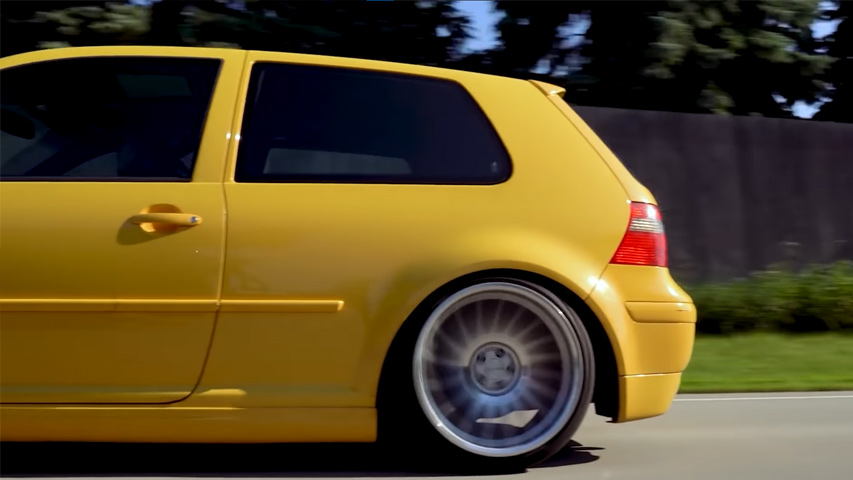
Tyre Stretch Benefits
If we want to mention tyre stretch benefits, we must acknowledge the fact that there are essentially very few real advantages versus significant disadvantages in the tyre stretch process. But the same benefits are so attractive and impressive to some that they do. However if we want to list the most important of these benefits they are:
- The most important reasons for the tire stretch are the advantages that they create in the appearance of the car. Stretched tires can give the car an aggressive and sporty look.
- There is a belief among drivers that tyre stretch will improve the handling of the car. This occurs by slightly tightening the side walls of the tire and increasing the width of the tire’s contact with the ground.
- There is also the claim that the tyre stretch can provide easier twisting or better control of the car in U-shaped turns. Because the edges of the elongated tires stick to the ground, making it easier to twist at U-rounds with less steering Wheel.
Summary
In this article, we tried to cover the topic of Tyre stretch in detail. So we talked about it and the different levels of tire traction in four steps.
We also mentioned the advantages and differences between a tire and a regular tire. But in conclusion, as a summary, we must acknowledge that whatever tire traction may create an attractive and sporty look for the car, but it also has significant safety Risks.
So if you prefer a more attractive and sporty look to safety hazards alongside the claim that car handling is more optimized, the Tyre stretch is the right option for you.

Source:
tyrestretch



